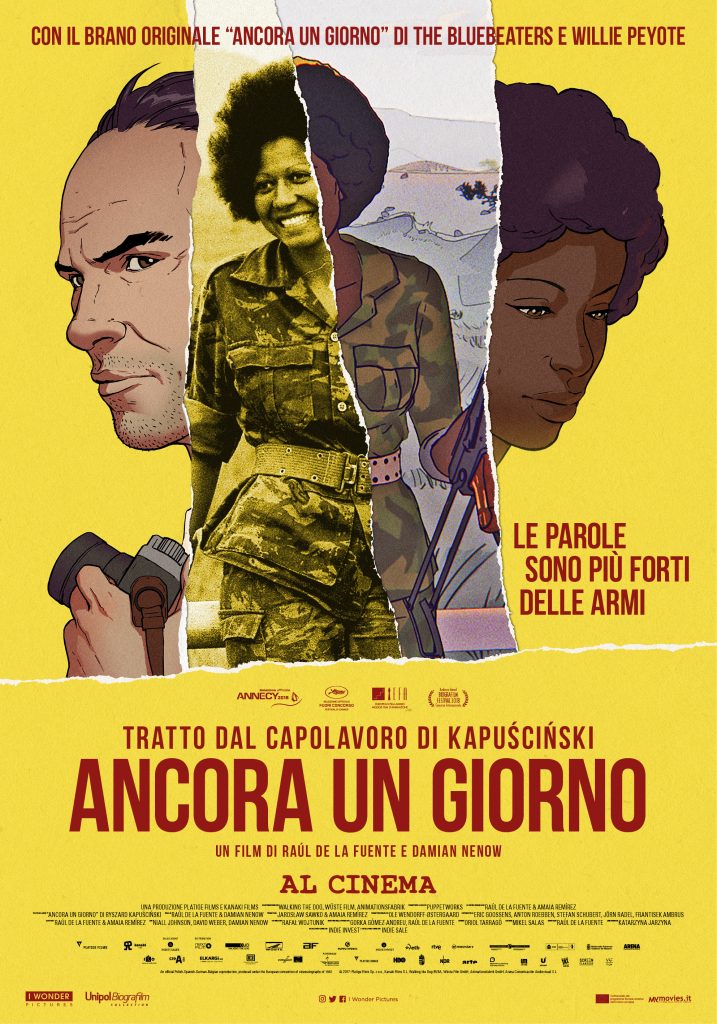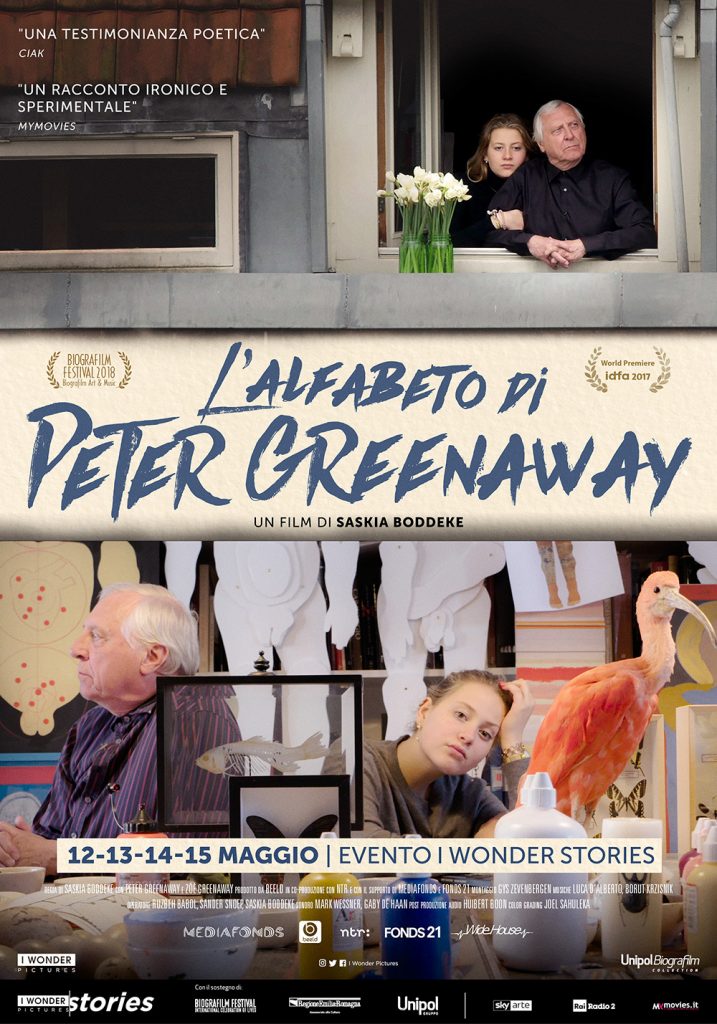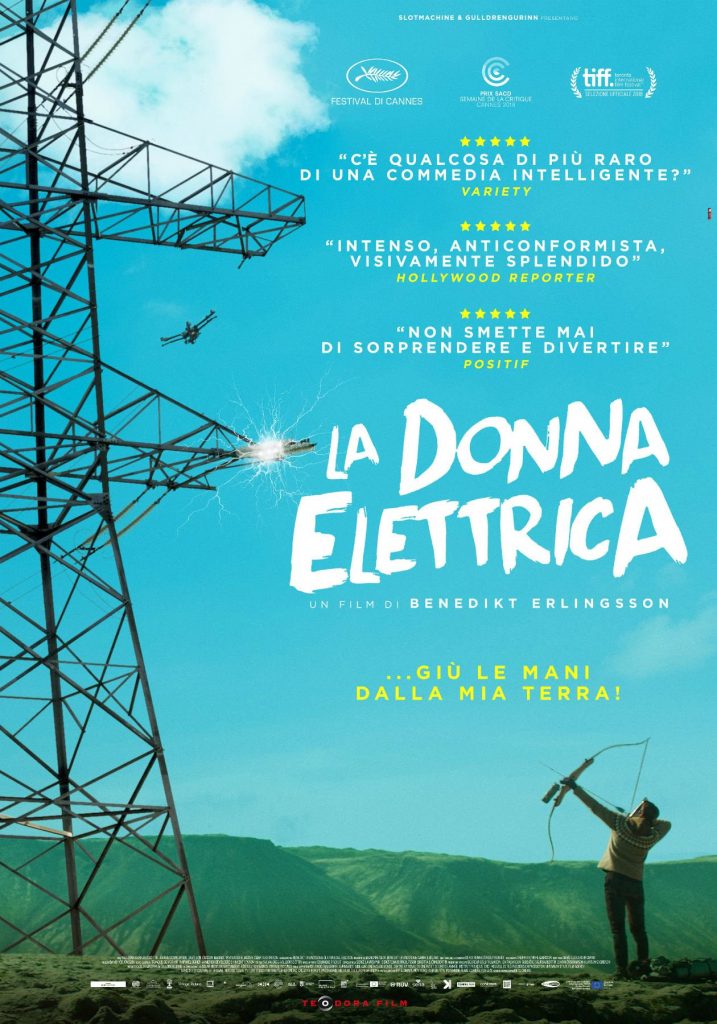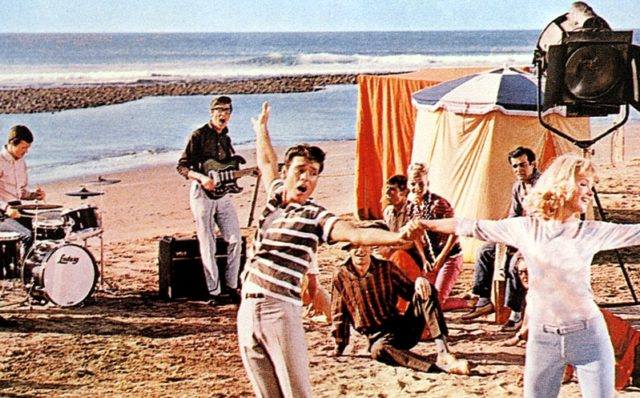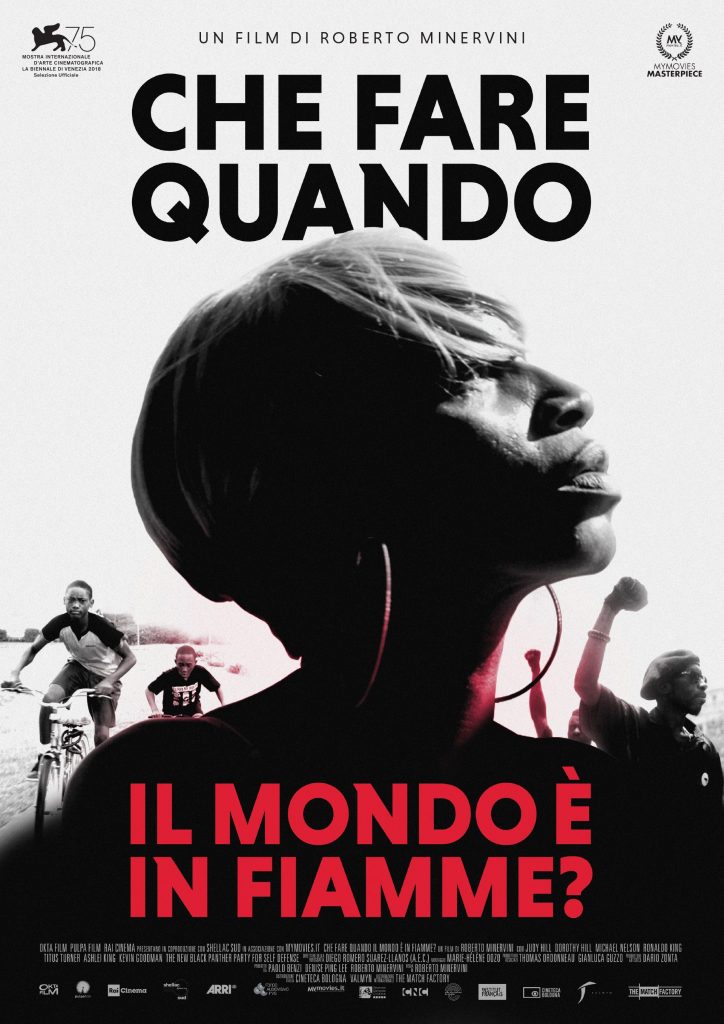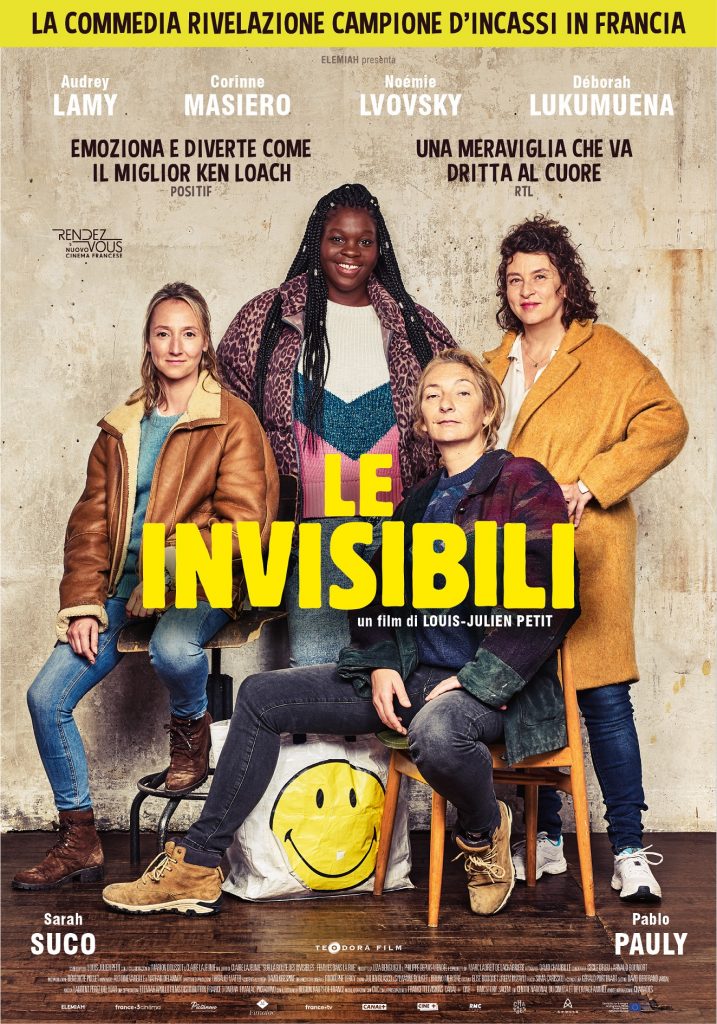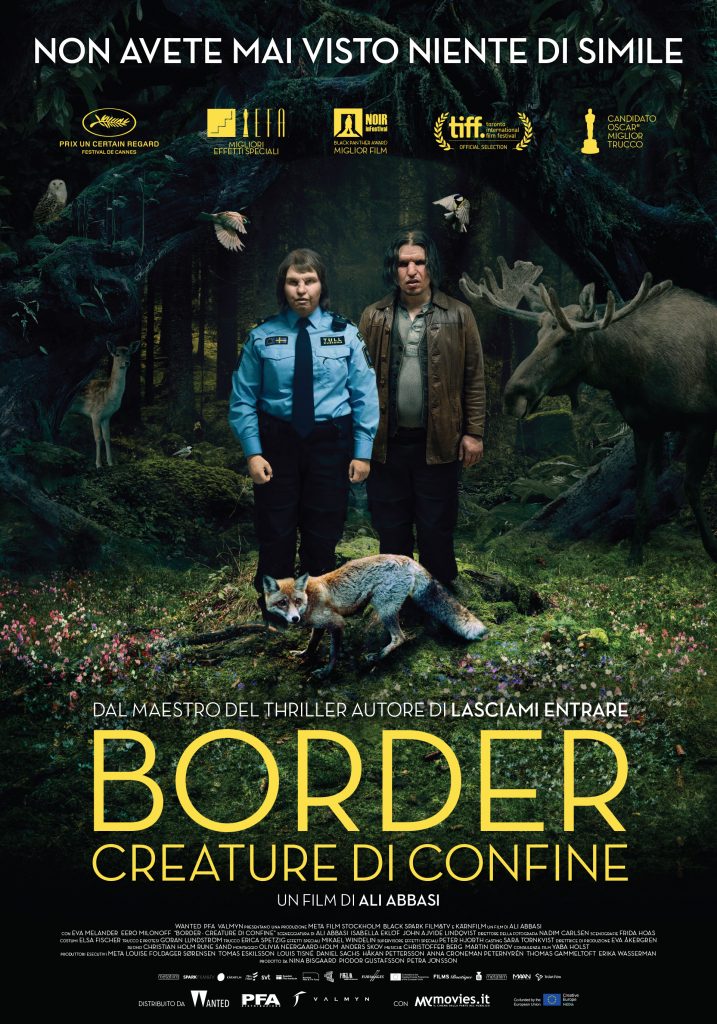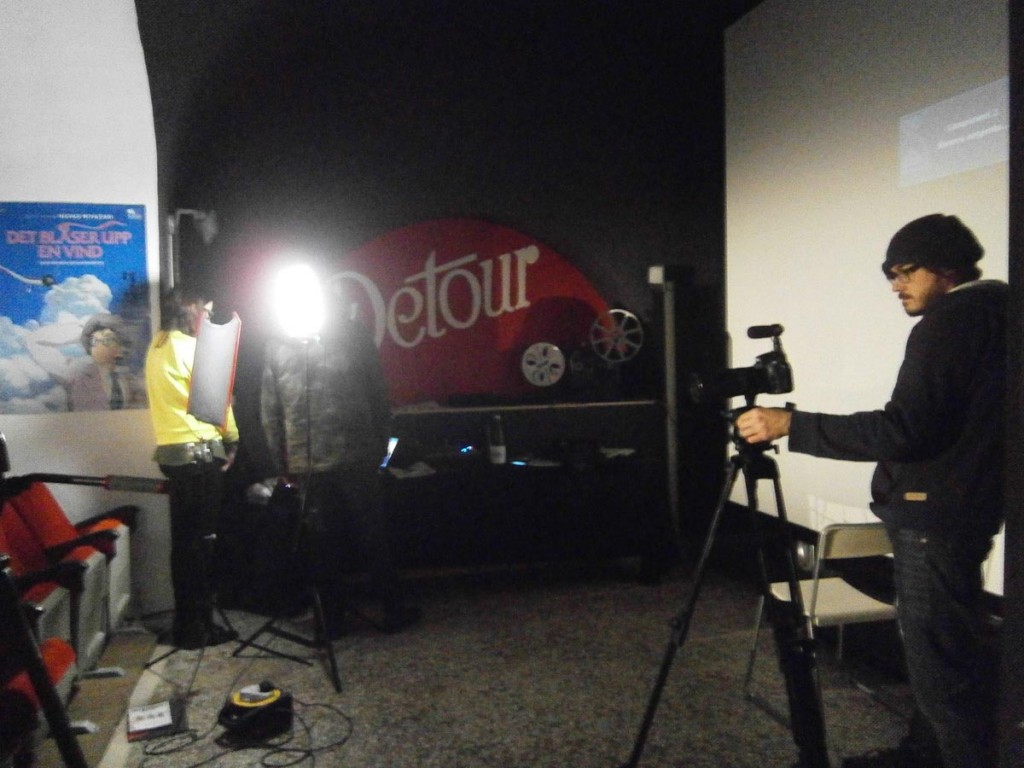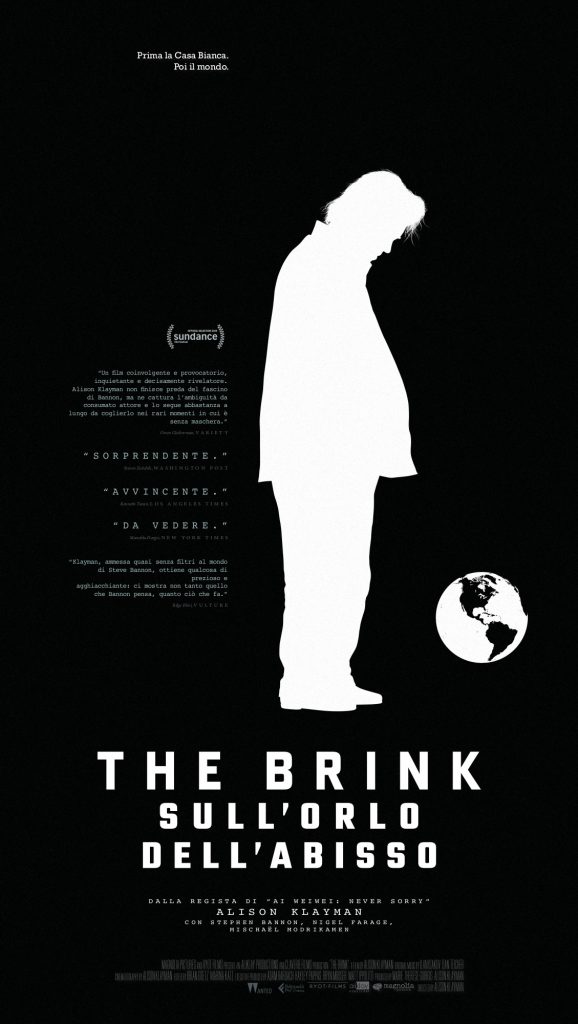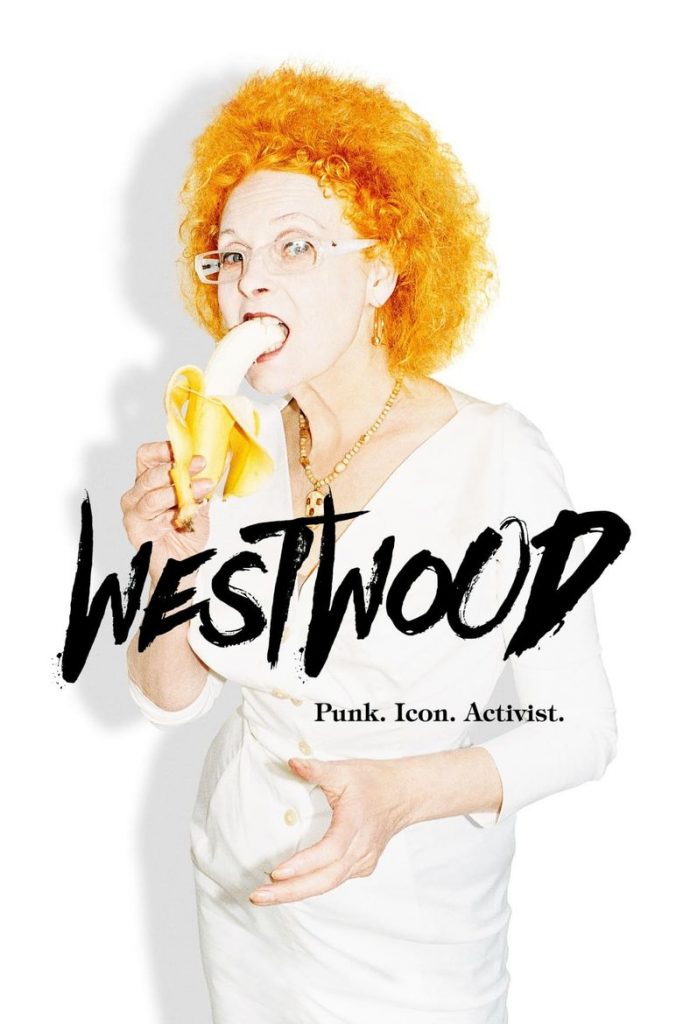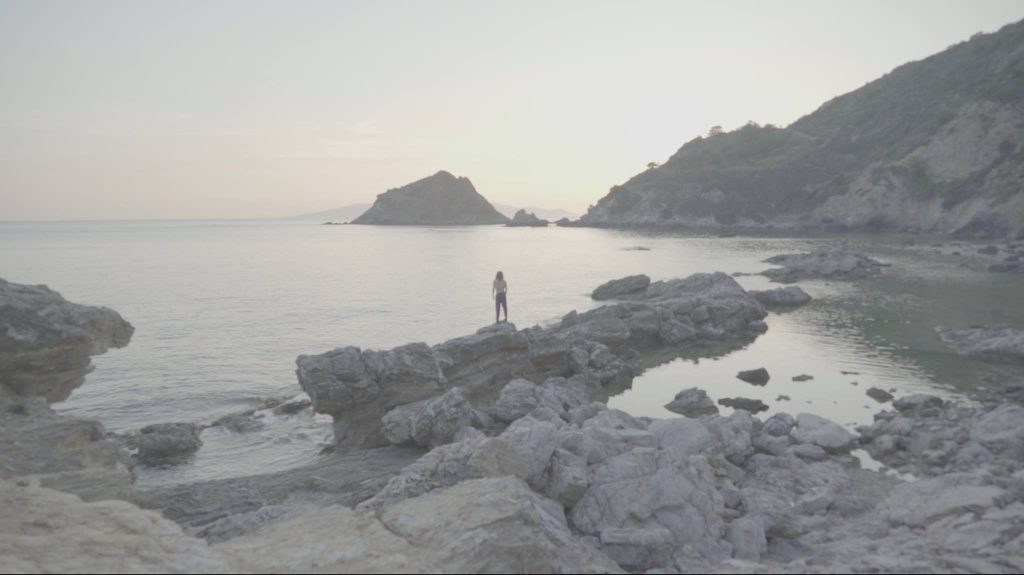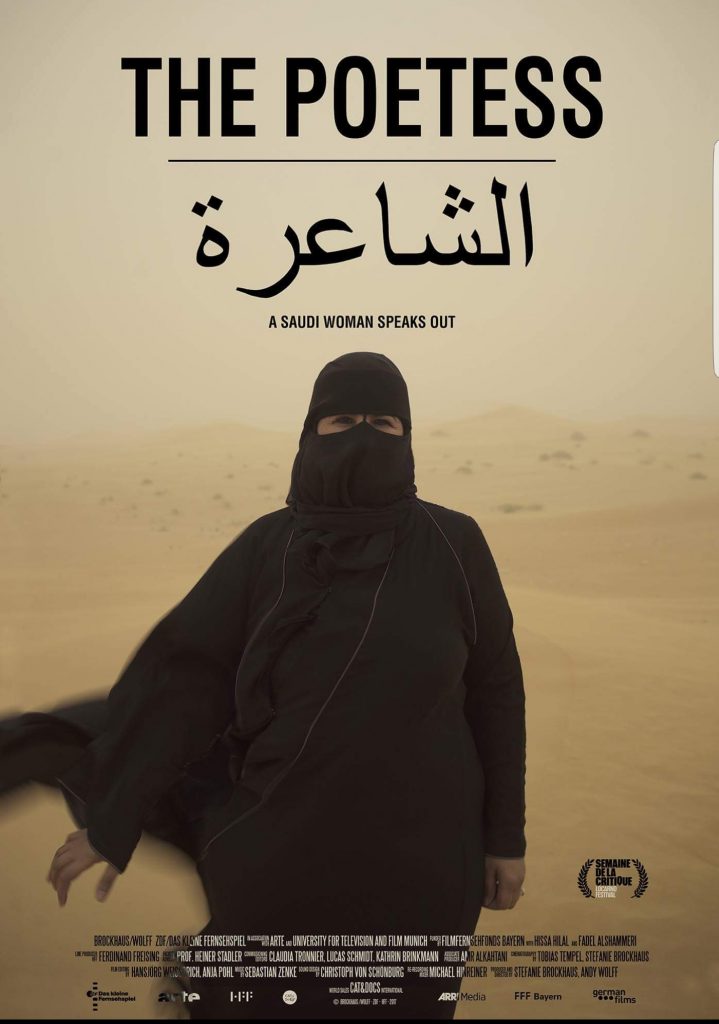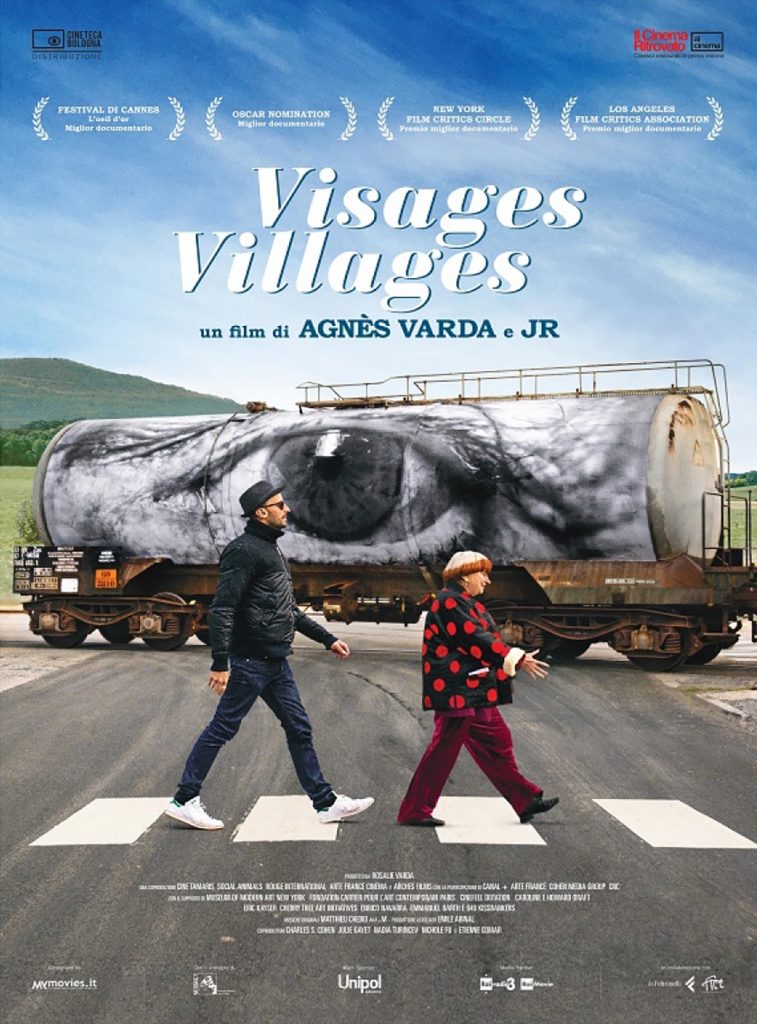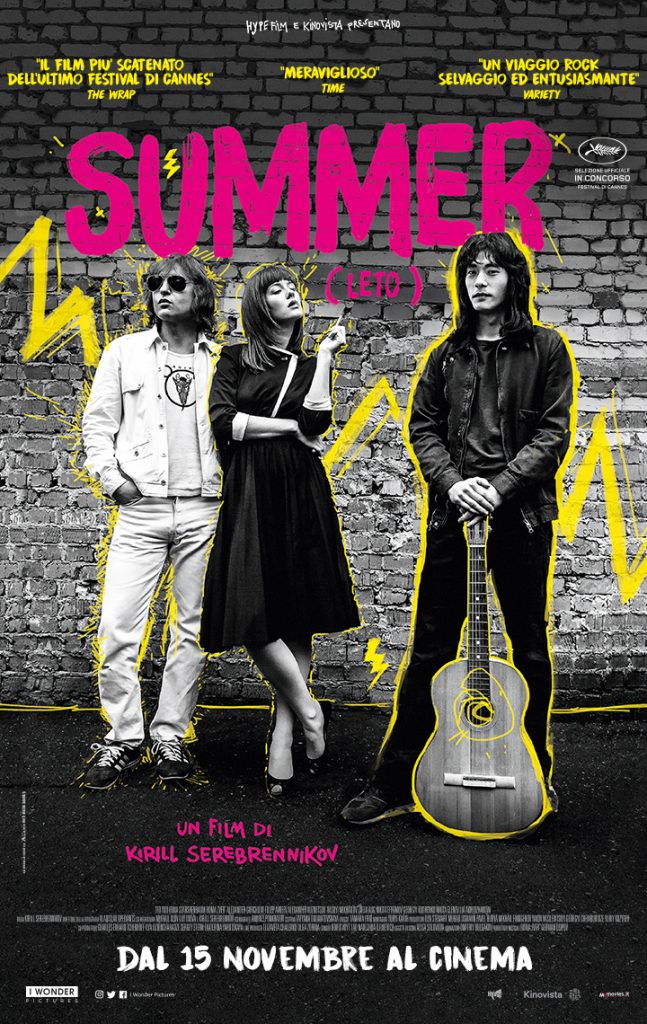Thursday 20 Jun 2019
Ryszard Kapuscinski was one of the 20th century’s principal and most colourful war reporters. He reported on 27 revolutions during his career, was imprisoned 40 times and sentenced to death four times. He was primarily active in Africa as a correspondent for a Polish news agency. When civil war erupted in Angola in 1975, he was the only foreign reporter on the ground. His book Another Day of Life describes how that diamond and oil-rich country was used as a Cold War pawn. Kapuscinski’s writing style is subjective, sometimes even surreal. This animated adaptation does complete justice to his form of literary reportage. Hallucinatory impressions of chaotic firefights are recorded in a graphic-novel-like style. Interviews with the main characters were made in real life, 40 years later – some have become successful, others have gone mad. This is a story, but no work of fiction.
Thursday 20 Jun 2019
The fascinations of filmmaker Peter Greenaway, whose motto is "art is life and life is art,"are captured like butterflies and arranged in an alphabet, a form that suits him perfectly as an encyclopedist. In intimate conversations with his perceptive 16-year-old daughter Zoë, we discover the whos, whats and whys about Greenaway. They begin with A, which stands for Amsterdam, but could also stand for autism, Zoë suggests. Greenaway’s boundless creativity, unconstrained flow of words and passion for collecting certainly bring this to mind, and he admits to wearing the label with pride. The playful conversations don’t shy away from more painful topics; we hear that Greenaway hasn’t seen two other children of his for years. And later, heartbroken and in tears, Zoë asks him if for once he’ll stop talking like a commentator. Zoë’s spontaneous questions penetrate Greenaway to the core, enabling his wife, multimedia artist Saskia Boddeke, to make a deeply personal portrait not only of the artist, but also of Greenaway the father in his battle against time.
Wednesday 19 Jun 2019
Halla, a woman in her forties, declares war on the local aluminum industry to prevent it from disfiguring her country. She risks all she has to protect the highlands of Iceland-but the situation could change with the unexpected arrival of a small orphan in her life.
Monday 17 Jun 2019
Detour si prende le meritate vacanze! La nostra programmazione regolare riprende a settembre. Nel frattempo prosegue il lavoro di selezione di film e cortometraggi a tema di viaggio che vedremo in concorso in autunno nell'ambito della settima edizione di ON THE ROAD FILM FESTIVAL. Scadenze per le iscrizioni: 31 agosto 2019 (regolare) e 15 settembre 2018 (ultima chiamata). Un ringraziamento sincero per averci seguito e accompagnato durante questa intensa stagione di cinema indipendente. Buona estate a tutte e tutti voi!!
Friday 14 Jun 2019
The story of a community of black people in the American South during the summer 2017, when a string of brutal killings of black men sent shockwaves throughout the country. A meditation on the state of race in America, this film is an intimate portrait into the lives of those who struggle for justice, dignity, and survival in a country not on their side. DIRECTOR’S NOTES. I have told stories of the American South which were unfolding before my eyes in unexpected ways. I have documented clusters of today’s America where the seeds of anti-institutional, reactionary anger (which gifted the country with Donald Trump as the new president) were already planted, but no one cared to notice. This time, I intended to dig even deeper into the roots of social inequality in America, by focusing on the condition of African Americans. While preparing the film, we were able to establish deep bonds with several people, and gained access to neighbourhoods and communities that are off-limits to most. I soon realised that most of the people I met felt strongly about two dramatic events in Louisiana’s recent history: Hurricane Katrina (2005) and the killing of Alton Sterling (2016). Both events are the result of institutional negligence, of a socioeconomic divide between rich and poor, and of strong endemic racism. Moved by anger and fear, people wanted to get a chance to tell their stories out loud. I hope that this film can facilitate a much-needed discussion on race and the current plight of African Americans who, now more than ever, are witnessing the intensification of hate crimes and discriminatory policies.
Thursday 13 Jun 2019
Ryszard Kapuscinski was one of the 20th century’s principal and most colourful war reporters. He reported on 27 revolutions during his career, was imprisoned 40 times and sentenced to death four times. He was primarily active in Africa as a correspondent for a Polish news agency. When civil war erupted in Angola in 1975, he was the only foreign reporter on the ground. His book Another Day of Life describes how that diamond and oil-rich country was used as a Cold War pawn. Kapuscinski’s writing style is subjective, sometimes even surreal. This animated adaptation does complete justice to his form of literary reportage. Hallucinatory impressions of chaotic firefights are recorded in a graphic-novel-like style. Interviews with the main characters were made in real life, 40 years later – some have become successful, others have gone mad. This is a story, but no work of fiction.
Wednesday 12 Jun 2019
Box office hits in France. In three months a homeless shelter for women is set to close as the result of an administration decision. The social workers running the centre will do whatever it takes to reintegrate the women back into society. They have no protocol, everything is permitted... but time is running out.
Sunday 09 Jun 2019
In this dark fairytal Swedish actress Eva Melander buries herself in the role of Tina, an ostracized woman who feels out of place in society because of her otherworldly appearance. The peculiar creature she plays in director Ali Abbasi’s foreign-language Oscar submission suggests the unholy offspring of Quasimodo and a Tolkien Orc. But that’s just the starting point for an entrancing and unexpected love story when Tina — who works a lonely job in border security, using her rat-like sense of smell — wakes up to her superpowers when she meets a fawning man (Eero Milonoff) who looks just like her.
Saturday 08 Jun 2019
Ryszard Kapuscinski was one of the 20th century’s principal and most colourful war reporters. He reported on 27 revolutions during his career, was imprisoned 40 times and sentenced to death four times. He was primarily active in Africa as a correspondent for a Polish news agency. When civil war erupted in Angola in 1975, he was the only foreign reporter on the ground. His book Another Day of Life describes how that diamond and oil-rich country was used as a Cold War pawn. Kapuscinski’s writing style is subjective, sometimes even surreal. This animated adaptation does complete justice to his form of literary reportage. Hallucinatory impressions of chaotic firefights are recorded in a graphic-novel-like style. Interviews with the main characters were made in real life, 40 years later – some have become successful, others have gone mad. This is a story, but no work of fiction.
Friday 07 Jun 2019
Box office hits in France. In three months a homeless shelter for women is set to close as the result of an administration decision. The social workers running the centre will do whatever it takes to reintegrate the women back into society. They have no protocol, everything is permitted... but time is running out.
Sunday 02 Jun 2019
Come i più affezionati e accorti di voi avranno sicuramente notato, questa settimana la consueta programmazione del Detour si svolgerà solo il giovedì e il venerdì e sera. Durante il weekend, invece, la sala diventerà il set cinematografico per le riprese di un cortometraggio ideato e diretto da un nostro socio. Cogliamo l'occasione per ricordare a tutti i soci la possibilità di utilizzo esclusivo della sala e il bar/foyer per i loro progetti artistici e professionali.
Friday 31 May 2019
The story of a community of black people in the American South during the summer 2017, when a string of brutal killings of black men sent shockwaves throughout the country. A meditation on the state of race in America, this film is an intimate portrait into the lives of those who struggle for justice, dignity, and survival in a country not on their side. DIRECTOR’S NOTES. I have told stories of the American South which were unfolding before my eyes in unexpected ways. I have documented clusters of today’s America where the seeds of anti-institutional, reactionary anger (which gifted the country with Donald Trump as the new president) were already planted, but no one cared to notice. This time, I intended to dig even deeper into the roots of social inequality in America, by focusing on the condition of African Americans. While preparing the film, we were able to establish deep bonds with several people, and gained access to neighbourhoods and communities that are off-limits to most. I soon realised that most of the people I met felt strongly about two dramatic events in Louisiana’s recent history: Hurricane Katrina (2005) and the killing of Alton Sterling (2016). Both events are the result of institutional negligence, of a socioeconomic divide between rich and poor, and of strong endemic racism. Moved by anger and fear, people wanted to get a chance to tell their stories out loud. I hope that this film can facilitate a much-needed discussion on race and the current plight of African Americans who, now more than ever, are witnessing the intensification of hate crimes and discriminatory policies.
Thursday 30 May 2019
Box office hits in France. In three months a homeless shelter for women is set to close as the result of an administration decision. The social workers running the centre will do whatever it takes to reintegrate the women back into society. They have no protocol, everything is permitted... but time is running out.

Sunday 26 May 2019
In occasione dell’uscita del suo libro fotografico Unusual Visions, l’incontro con il fotoreporter Emiliano Pinnizzotto sarà un’opportunità per conoscere il lavoro documentaristico dell’autore attraverso i racconti e le immagini di quattro suoi diversi reportage premiati a livello internazionale che rivelano un’India insolita. Una testimonianza fotografica di realtà molto particolari e semi sconosciute al grande pubblico, ma ancora presenti nel subcontinente indiano.
Saturday 25 May 2019
Box office hits in France. In three months a homeless shelter for women is set to close as the result of an administration decision. The social workers running the centre will do whatever it takes to reintegrate the women back into society. They have no protocol, everything is permitted... but time is running out.
Friday 24 May 2019
The story of a community of black people in the American South during the summer 2017, when a string of brutal killings of black men sent shockwaves throughout the country. A meditation on the state of race in America, this film is an intimate portrait into the lives of those who struggle for justice, dignity, and survival in a country not on their side. DIRECTOR’S NOTES. I have told stories of the American South which were unfolding before my eyes in unexpected ways. I have documented clusters of today’s America where the seeds of anti-institutional, reactionary anger (which gifted the country with Donald Trump as the new president) were already planted, but no one cared to notice. This time, I intended to dig even deeper into the roots of social inequality in America, by focusing on the condition of African Americans. While preparing the film, we were able to establish deep bonds with several people, and gained access to neighbourhoods and communities that are off-limits to most. I soon realised that most of the people I met felt strongly about two dramatic events in Louisiana’s recent history: Hurricane Katrina (2005) and the killing of Alton Sterling (2016). Both events are the result of institutional negligence, of a socioeconomic divide between rich and poor, and of strong endemic racism. Moved by anger and fear, people wanted to get a chance to tell their stories out loud. I hope that this film can facilitate a much-needed discussion on race and the current plight of African Americans who, now more than ever, are witnessing the intensification of hate crimes and discriminatory policies.
Thursday 23 May 2019
In this dark fairytal Swedish actress Eva Melander buries herself in the role of Tina, an ostracized woman who feels out of place in society because of her otherworldly appearance. The peculiar creature she plays in director Ali Abbasi’s foreign-language Oscar submission suggests the unholy offspring of Quasimodo and a Tolkien Orc. But that’s just the starting point for an entrancing and unexpected love story when Tina — who works a lonely job in border security, using her rat-like sense of smell — wakes up to her superpowers when she meets a fawning man (Eero Milonoff) who looks just like her.

Sunday 19 May 2019
Musical improvisation on five Dance Short Films directed by American pioneer film-makers Maya Deren e Hilary Harris, performed live by Luca Venitucci (Accordion), Giusi Bulotta (Double bass), Mauro Pallagrosi (Soprano Sax), Andrea Liberati (Guitars).
Saturday 18 May 2019
When Steve Bannon left his position as White House chief strategist less than a week after the Charlottesville "Unite the Right" rally in August 2017, he was already a notorious figure in Trump’s inner circle, and for bringing a far-right ideology into the highest echelons of American politics. Unconstrained by an official post — though some say he still has a direct line to the White House — he became free to peddle influence as a perceived kingmaker, turning his controversial brand of nationalism into a global movement. THE BRINK follows Bannon through the 2018 mid-term elections in the United States, shedding light on his efforts to mobilize and unify far-right parties in order to win seats in the May 2019 European Parliamentary elections. To maintain his power and influence, the former Goldman Sachs banker and media investor reinvents himself — as he has many times before — this time as the self-appointed leader of a global populist movement.
Friday 17 May 2019
In this dark fairytal Swedish actress Eva Melander buries herself in the role of Tina, an ostracized woman who feels out of place in society because of her otherworldly appearance. The peculiar creature she plays in director Ali Abbasi’s foreign-language Oscar submission suggests the unholy offspring of Quasimodo and a Tolkien Orc. But that’s just the starting point for an entrancing and unexpected love story when Tina — who works a lonely job in border security, using her rat-like sense of smell — wakes up to her superpowers when she meets a fawning man (Eero Milonoff) who looks just like her.
Sunday 12 May 2019
The first film to encompass the remarkable story of one of the true icons of our time, as she fights to maintain her brand's integrity, her principles and her legacy.
Saturday 11 May 2019
In this dark fairytal Swedish actress Eva Melander buries herself in the role of Tina, an ostracized woman who feels out of place in society because of her otherworldly appearance. The peculiar creature she plays in director Ali Abbasi’s foreign-language Oscar submission suggests the unholy offspring of Quasimodo and a Tolkien Orc. But that’s just the starting point for an entrancing and unexpected love story when Tina — who works a lonely job in border security, using her rat-like sense of smell — wakes up to her superpowers when she meets a fawning man (Eero Milonoff) who looks just like her.
Friday 10 May 2019
When Steve Bannon left his position as White House chief strategist less than a week after the Charlottesville "Unite the Right" rally in August 2017, he was already a notorious figure in Trump’s inner circle, and for bringing a far-right ideology into the highest echelons of American politics. Unconstrained by an official post — though some say he still has a direct line to the White House — he became free to peddle influence as a perceived kingmaker, turning his controversial brand of nationalism into a global movement. THE BRINK follows Bannon through the 2018 mid-term elections in the United States, shedding light on his efforts to mobilize and unify far-right parties in order to win seats in the May 2019 European Parliamentary elections. To maintain his power and influence, the former Goldman Sachs banker and media investor reinvents himself — as he has many times before — this time as the self-appointed leader of a global populist movement.
Friday 10 May 2019
Proiezione in anteprima del videoclip di "Move", seguita da una performance live di Rbsn. Ingresso con tessera. Gratuito per i soci detour. Diretto da Brando Pacitto, "Move" rappresenta il mito di Sisifo applicato all’umanità moderna e all’industria musicale. Spingere una roccia che per il suo stesso peso torna al punto di partenza, l’importanza delle transizioni e l’inganno della sottomissione sono i concetti che hanno ispirato in primis il brano (http://bit.ly/Move_song), realizzato insieme a Roberto Angelini presso Pyramid Produzioni, e successivamente il video scritto a quattro mani da RBSN e Brando Pacitto ed interpretato magistralmente da Valeria Bono e Chabeli Sastre Gonzalez.
Sunday 05 May 2019
In 2010, Saudi Arabian writer and activist Hissa Hilal did something unimaginable she starred in the Arab World's biggest televised live poetry competition. In a society where the art of poetry is alive and well, 'Million's Poet' is a hugely popular X-Factor style talent show. Storming through the rounds, and becoming progressively more political in her critique of religious extremism and her patriarchal society, Hilal became the first woman to reach the show's final speaking with wit and lyricism on live tv to an audience of 70 million (Rotten tomatoes).
Saturday 04 May 2019
In this dark fairytal Swedish actress Eva Melander buries herself in the role of Tina, an ostracized woman who feels out of place in society because of her otherworldly appearance. The peculiar creature she plays in director Ali Abbasi’s foreign-language Oscar submission suggests the unholy offspring of Quasimodo and a Tolkien Orc. But that’s just the starting point for an entrancing and unexpected love story when Tina — who works a lonely job in border security, using her rat-like sense of smell — wakes up to her superpowers when she meets a fawning man (Eero Milonoff) who looks just like her.
Friday 03 May 2019
Agnès Varda goes on the road with street artist JR to create remarkable, moving portraits of the people they meet. Here’s a wonderful warmth and playful indirectness to this essay/road movie in the classic nouvelle vague spirit, conjuring a semi-accidental narrative in the midst of what is ostensibly a documentary. It is a collaboration between the 90-year-old director Agnès Varda and a 35-year-old French street artist who styles himself simply JR and always wears a hat and dark glasses, indoors and out – an opaque mannerism, almost a disguise, which Varda compares to her old comrade Jean-Luc Godard, and which irritates her a little bit.
Sunday 28 Apr 2019
Agnès Varda goes on the road with street artist JR to create remarkable, moving portraits of the people they meet. Here’s a wonderful warmth and playful indirectness to this essay/road movie in the classic nouvelle vague spirit, conjuring a semi-accidental narrative in the midst of what is ostensibly a documentary. It is a collaboration between the 90-year-old director Agnès Varda and a 35-year-old French street artist who styles himself simply JR and always wears a hat and dark glasses, indoors and out – an opaque mannerism, almost a disguise, which Varda compares to her old comrade Jean-Luc Godard, and which irritates her a little bit.
Saturday 27 Apr 2019
The first film to encompass the remarkable story of one of the true icons of our time, as she fights to maintain her brand's integrity, her principles and her legacy.
Friday 26 Apr 2019
Inspired by the early years of two Russian rock stars from the 1980s, Kirill Serebrennikov's film pays tribute to the Leningrad underground scene just before the dawn of perestroika. Premiered in competition at the 2018 Cannes Film Festival.

